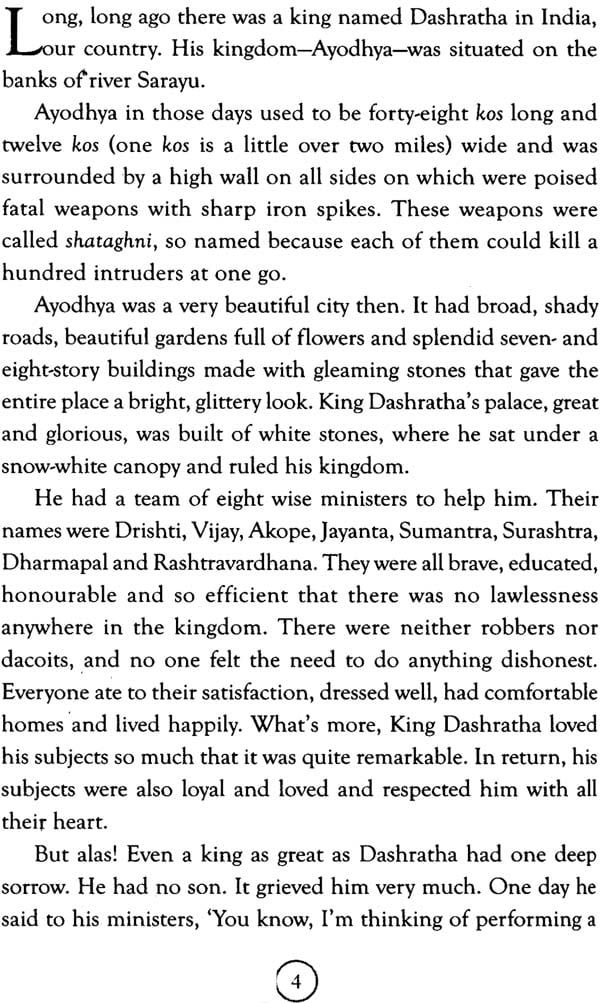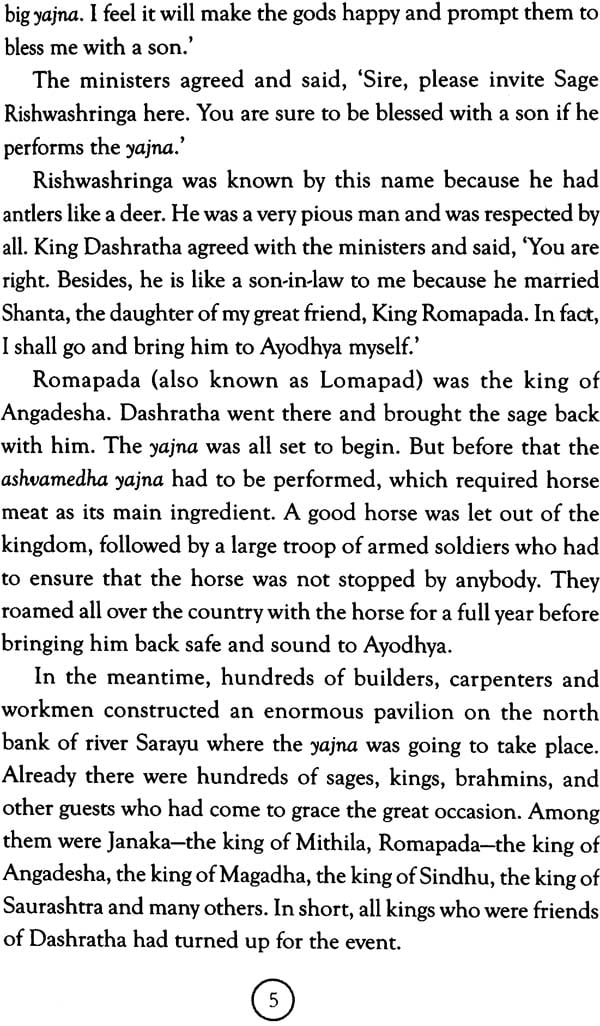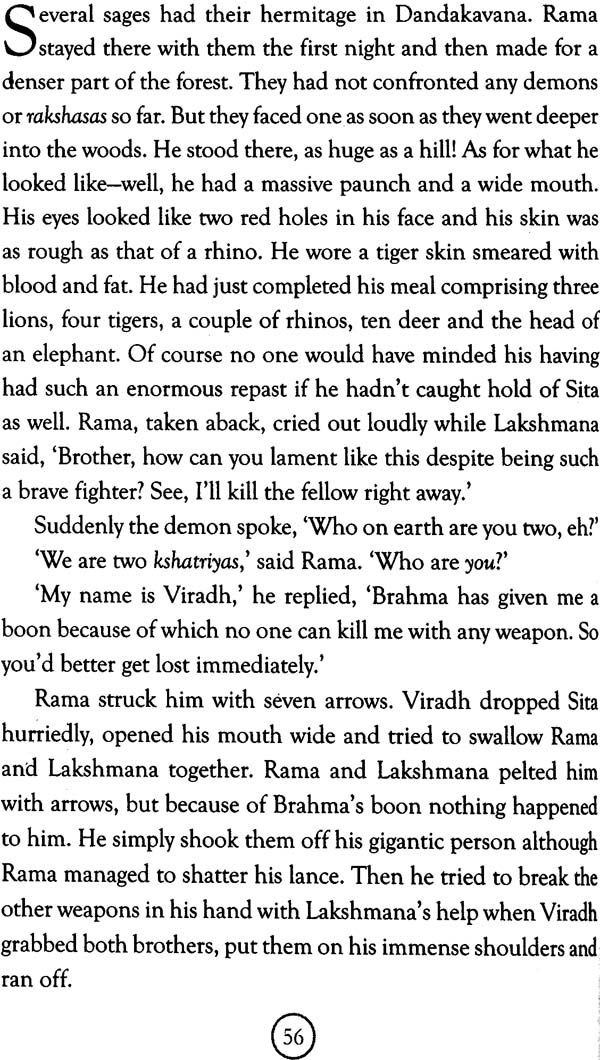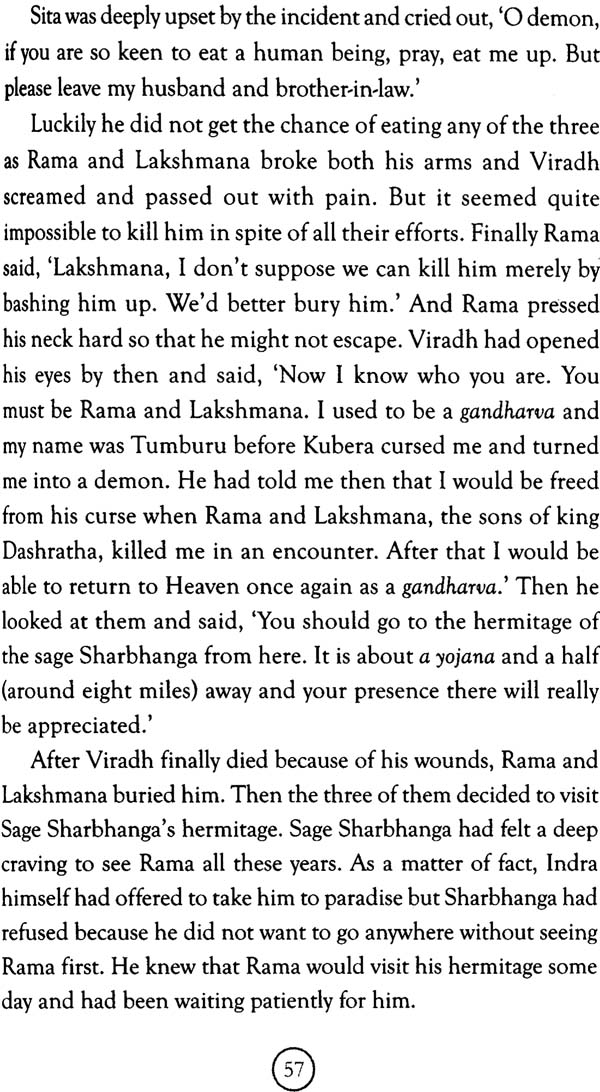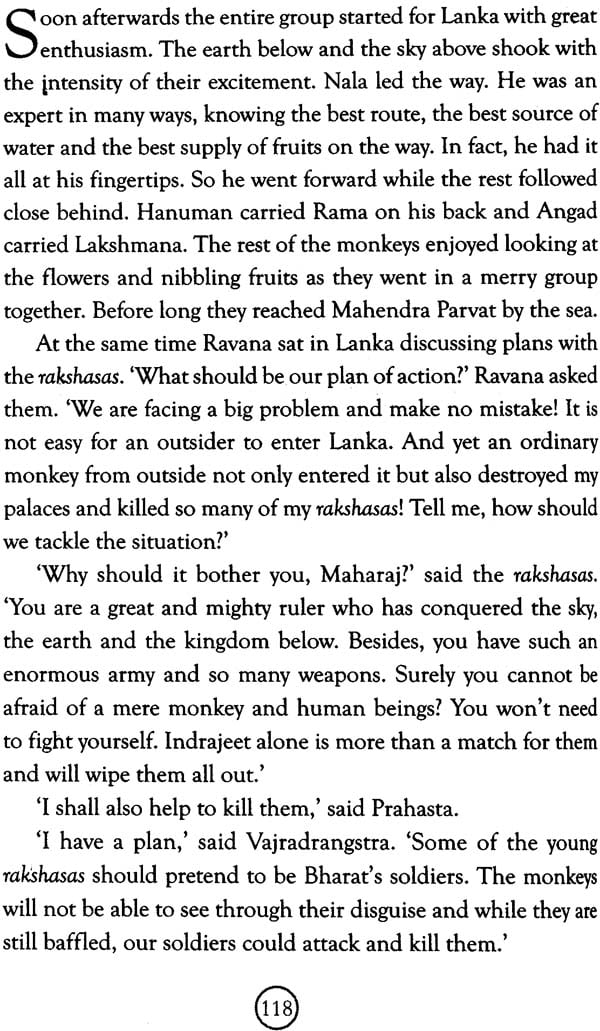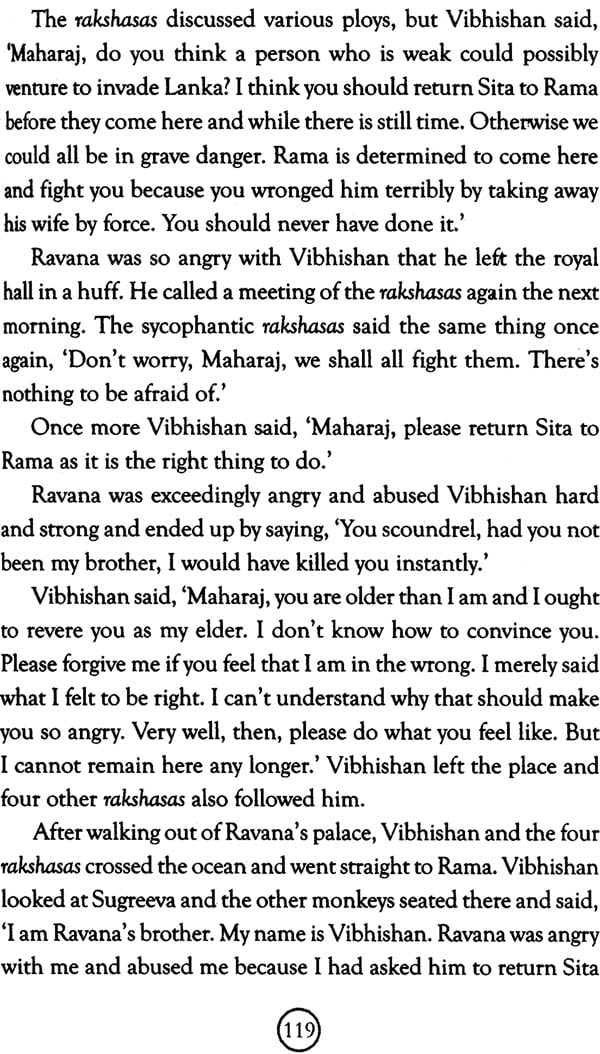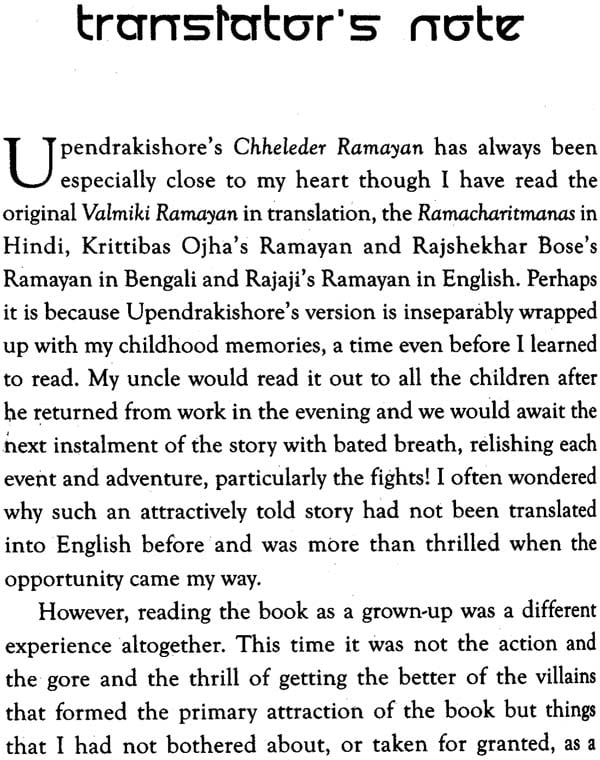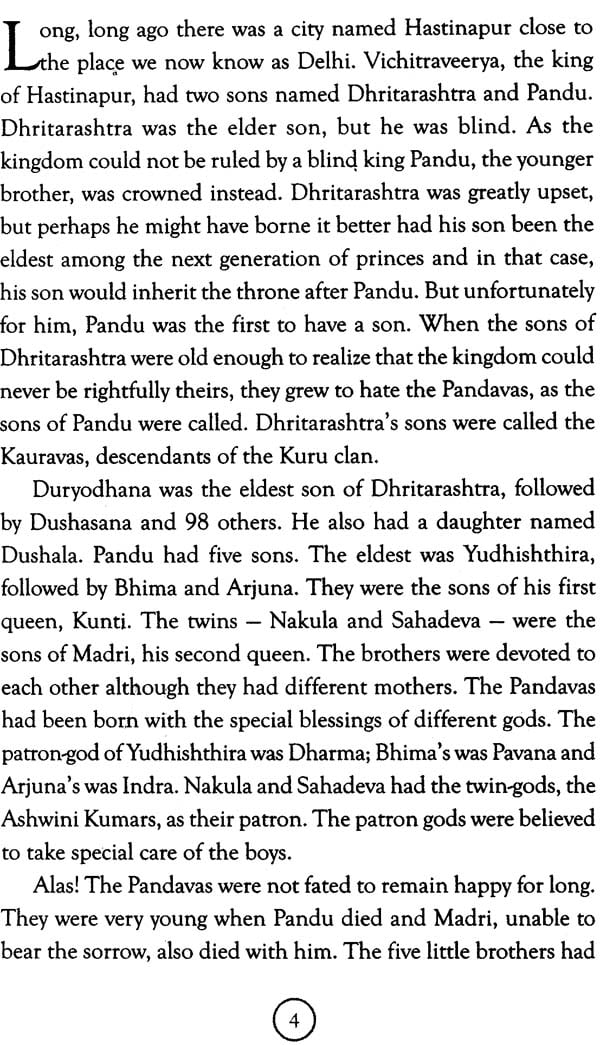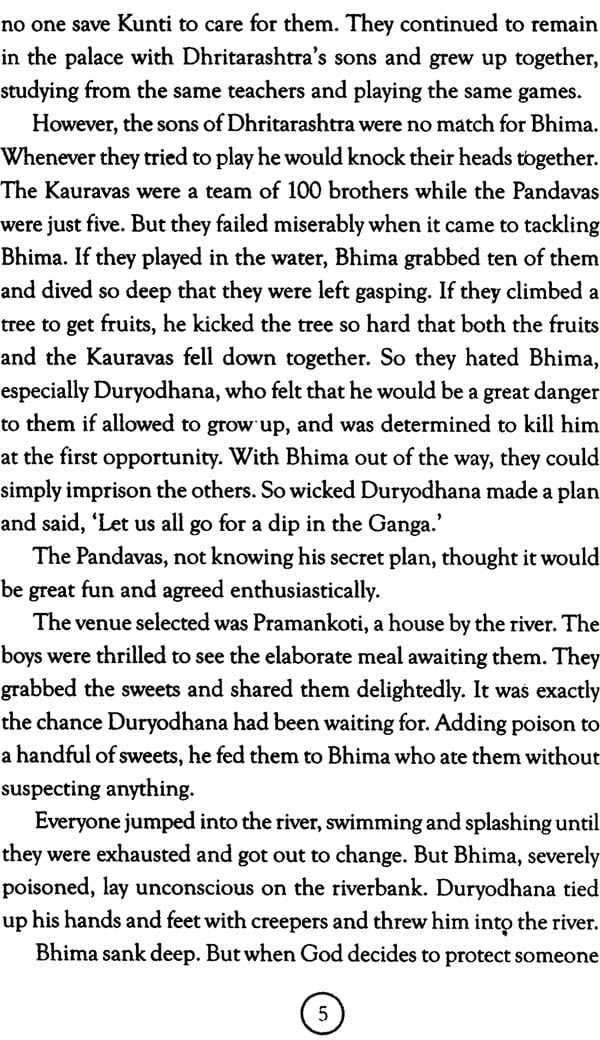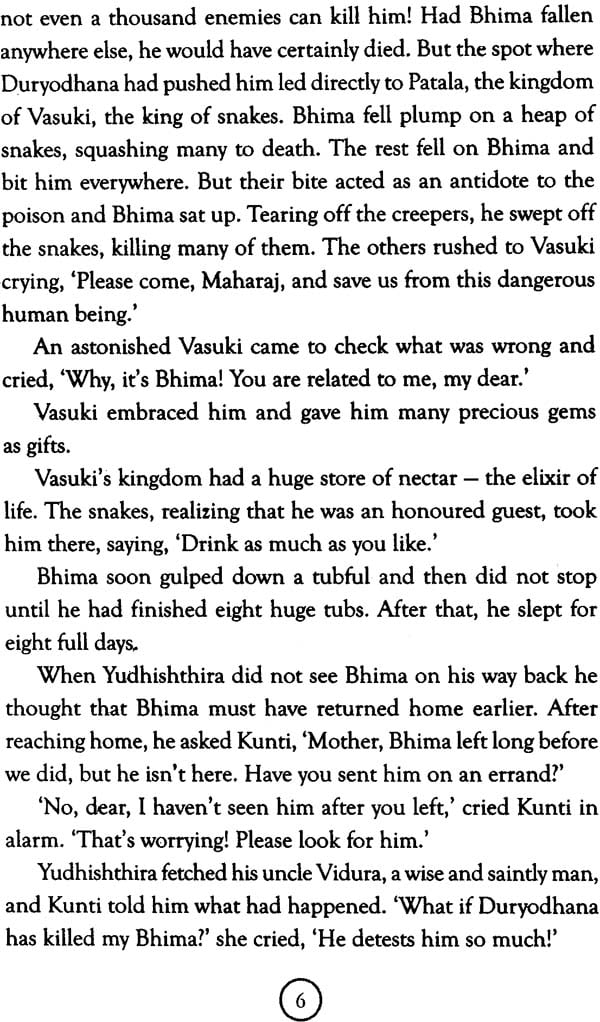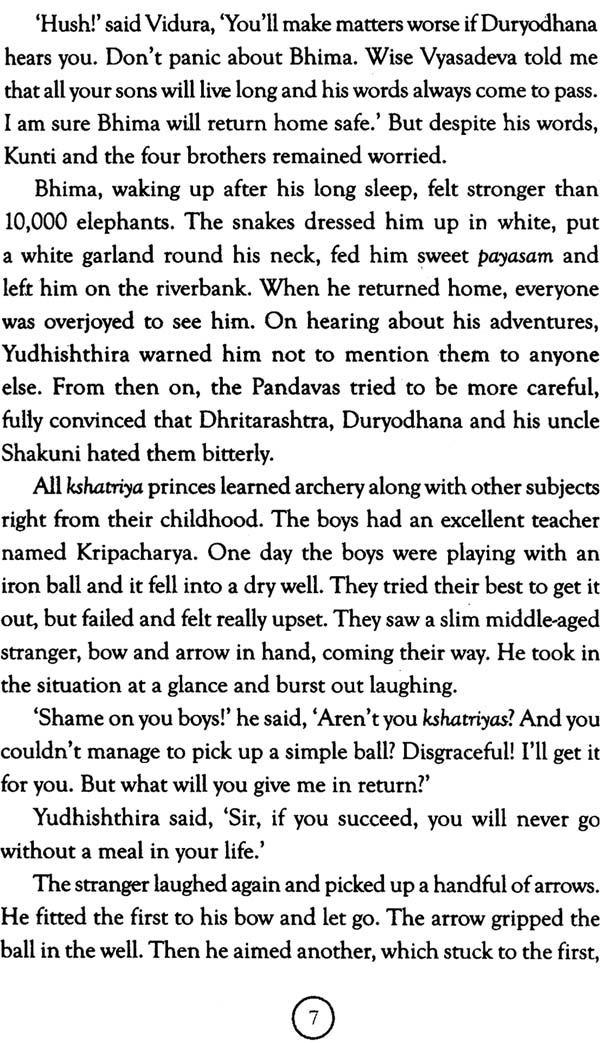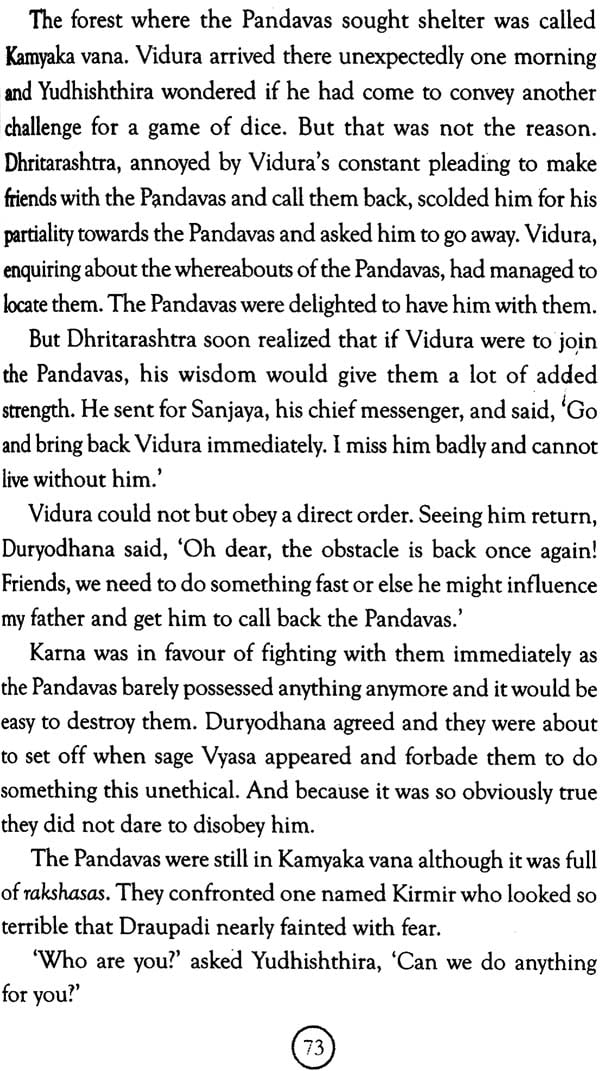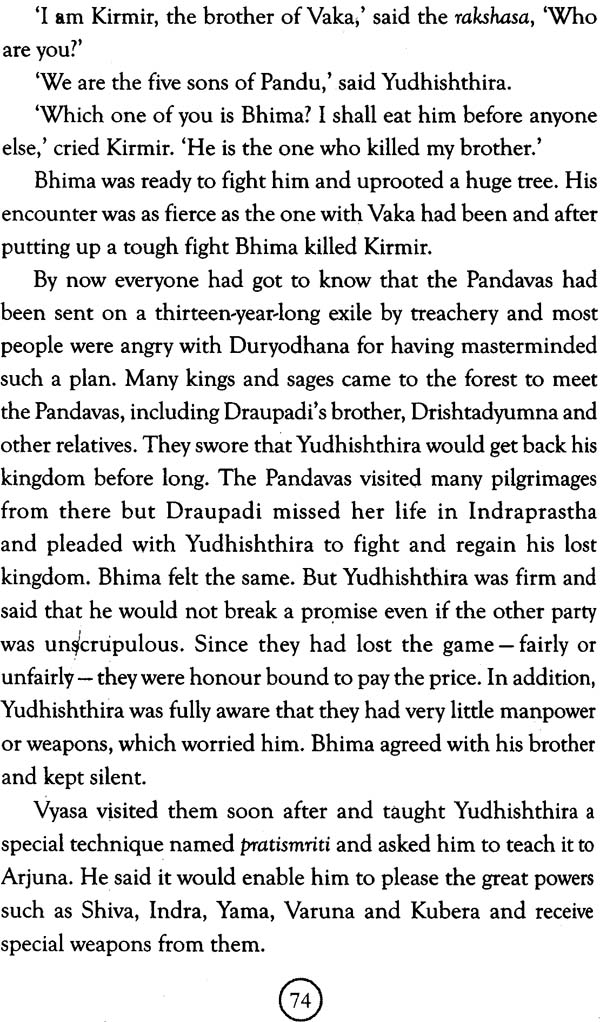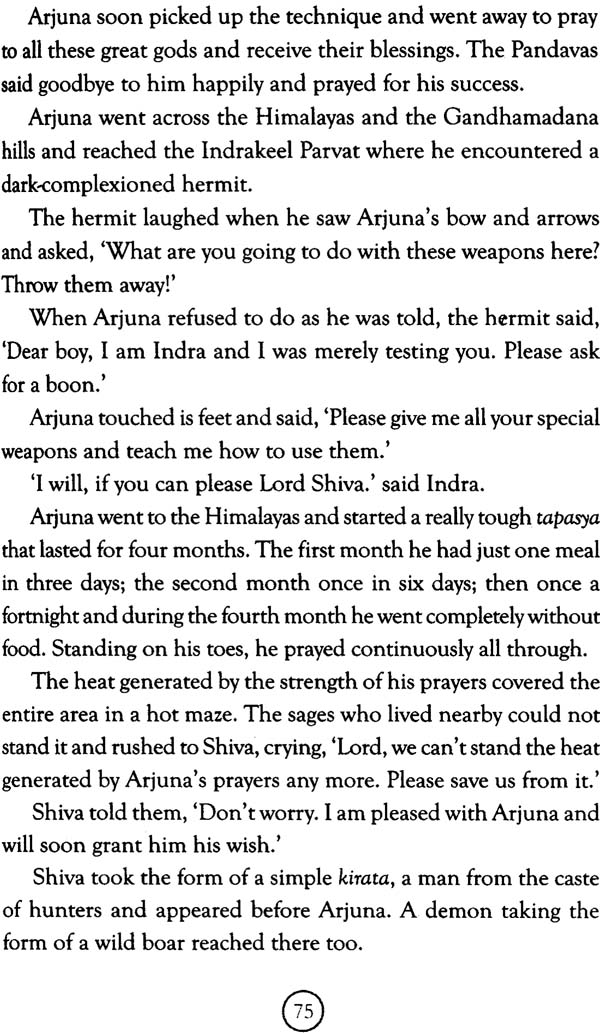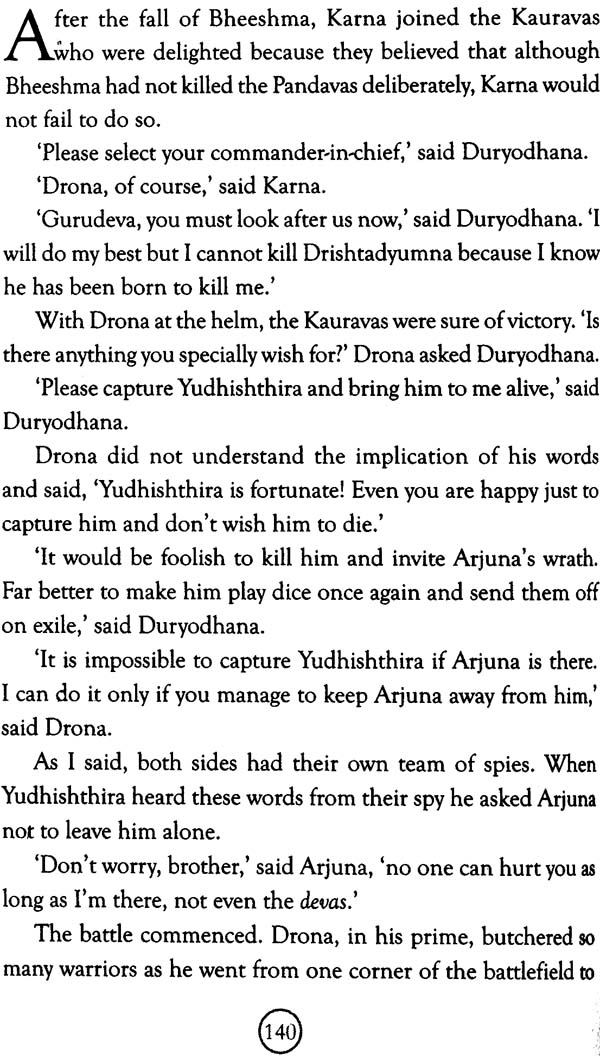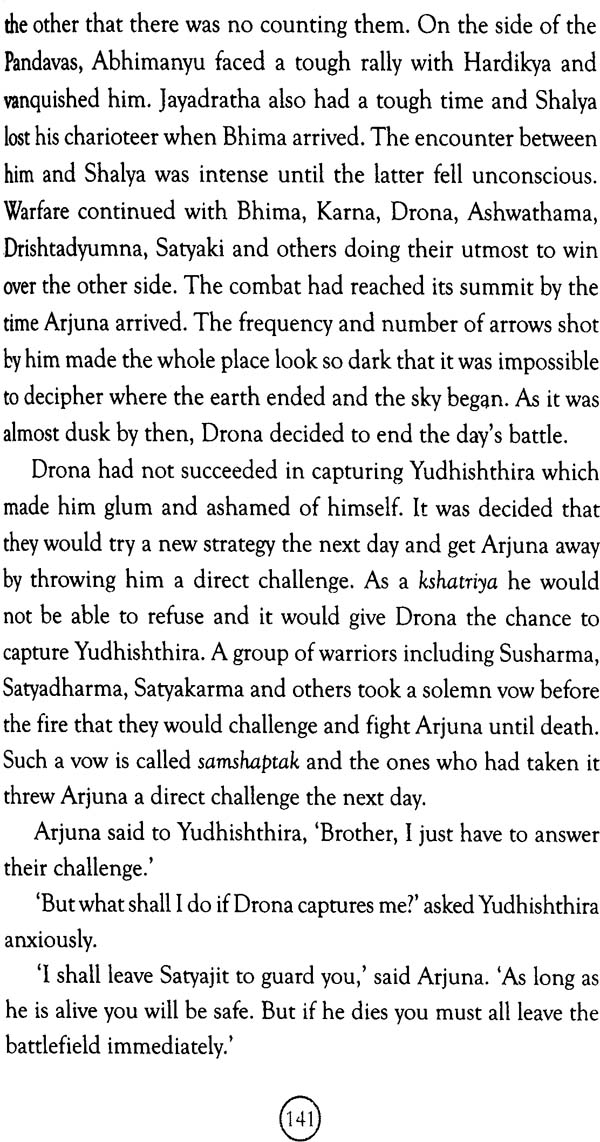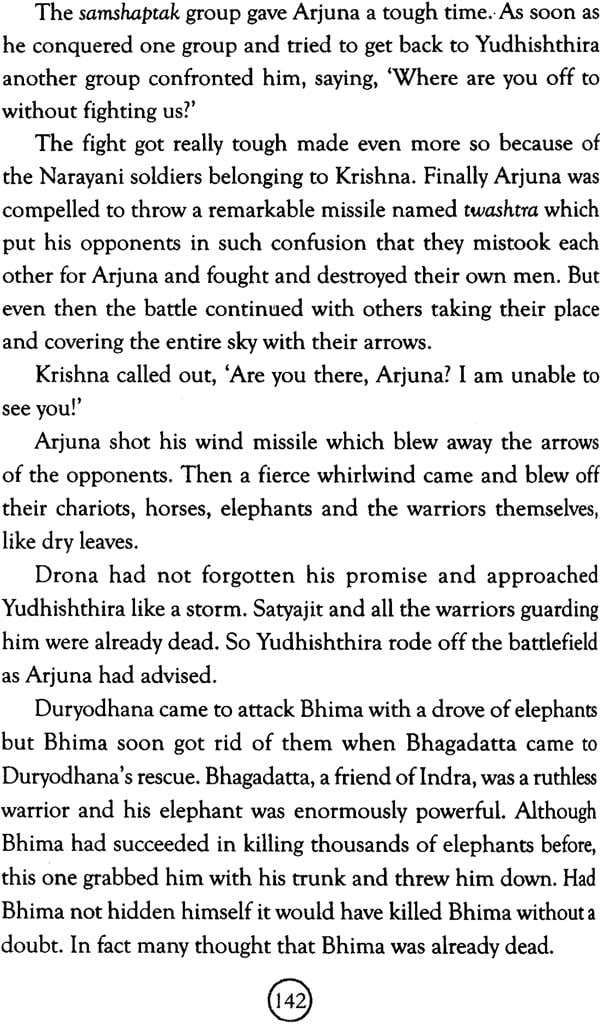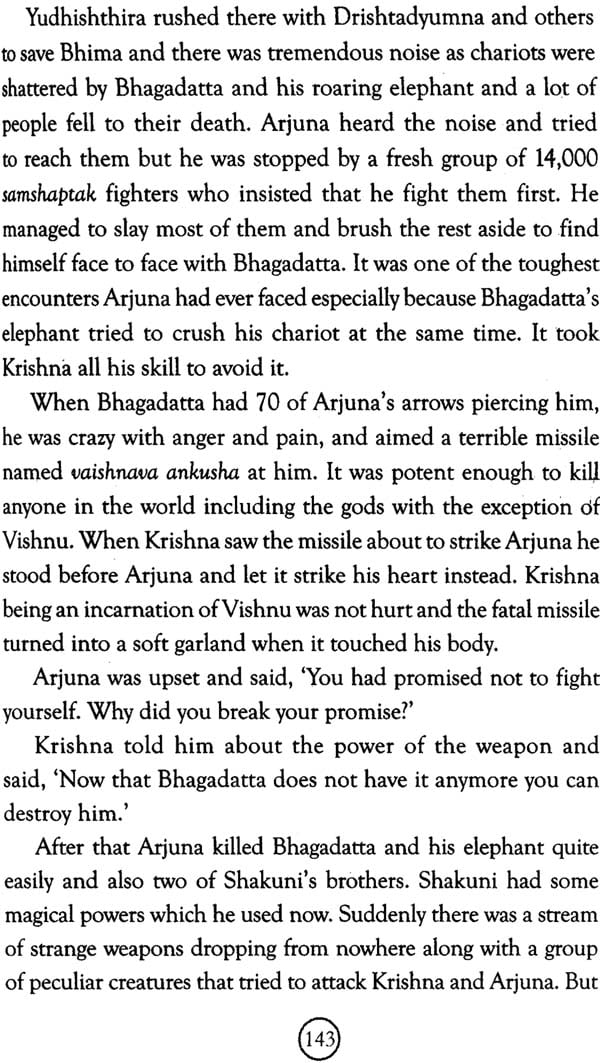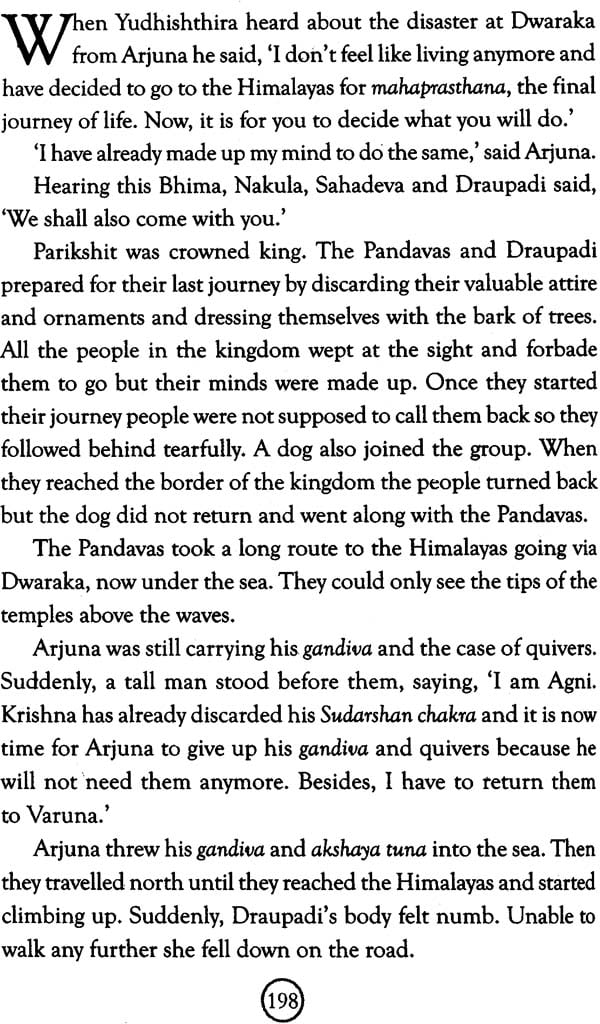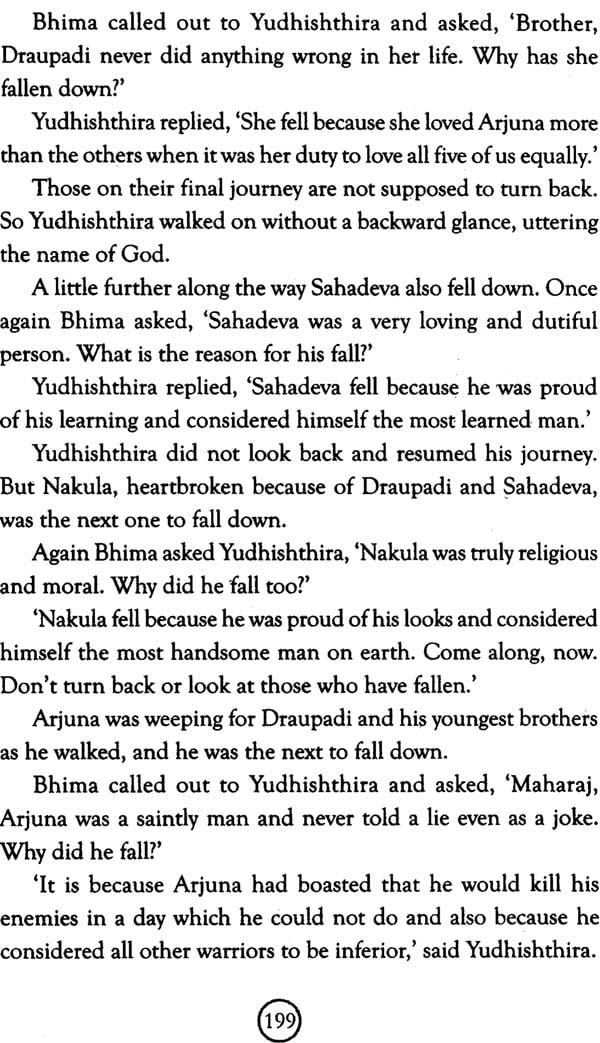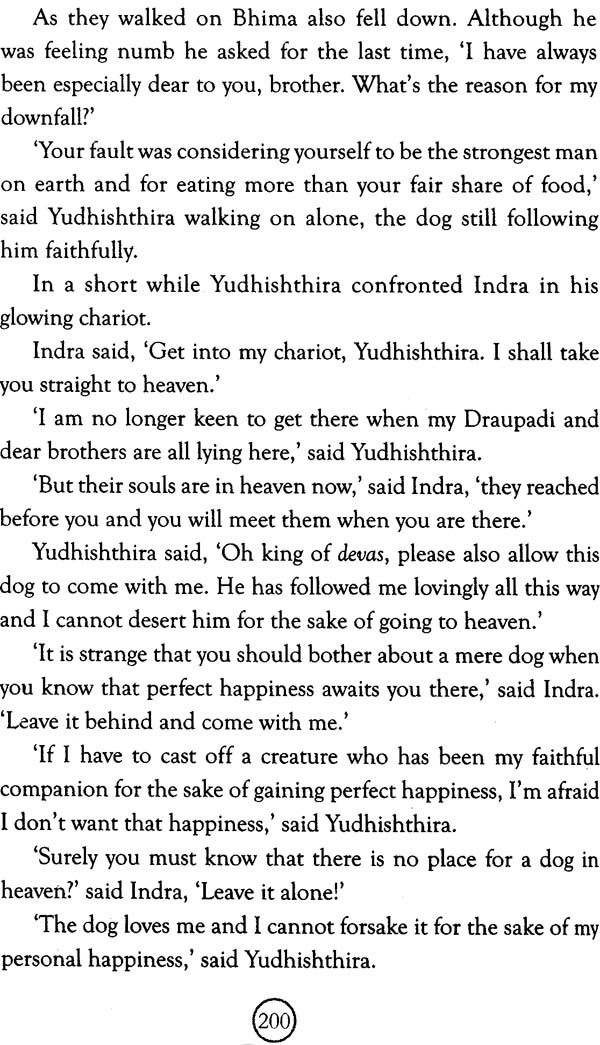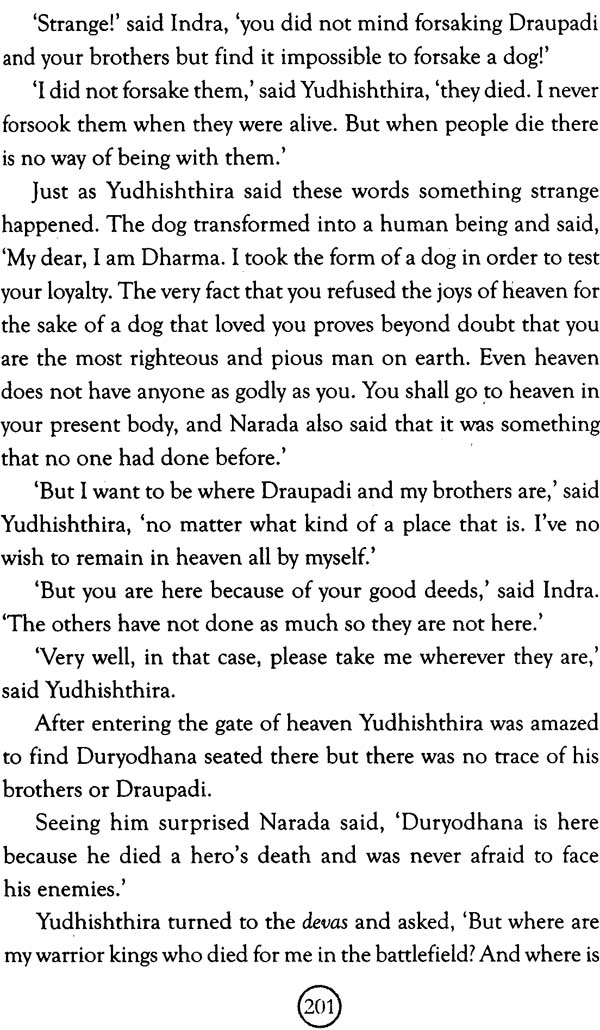
An Epic Celebration of india: Timeless Classics for Children (Set of 3 Books)
Book Specification
| Item Code: | NAL355 |
| Author: | Upendrakishore Ray Chowdhury and Roopa Rai |
| Publisher: | Hachette India |
| Language: | English |
| Edition: | 2015 |
| ISBN: | Ramayana 9789350097588 Mahabharata- 9789350099988 Gita - 9789351950127 |
| Pages: | 736 (43 B/W Illustratiins) |
| Cover: | Paperback |
| Other Details | 7.0 inch X 5.0 inch |
| Weight | 550 gm |
Book Description
This set consists of the following 3 Books:
Ramayana for Young Readers
Mahabharata for Young Readers
The Gita for Children
The Ramayana Is one of the two great Indian epics, the other being the Mahabharata. The Ramayana Is said to have been composed by the sage Valmiki, known as the Adi Kavi or the 'first poet', who created the 'shloka' or verse form In which the epics and other Important works such as the Puranas were composed.
The name Ramayana Is a compound of 'Rama' and 'ayana' ('going, advancing'), meaning 'Rama's Journey'.
Valmiki' s Ramayana is said to consist of 24,000 verses in six books ('kandas' or events) and 500 cantos ('sargas'). It is said that the seventh 'kanda' was not part of the original. The narrative Is divided Into the following 'kandas':
1. Adi (also Known as Bala Kanda) describes the boyhood and youth of Rama. He Is brought up and trained as a prince along with his brothers, Lakshmana, Bharat and Shatrughna. When Sita, the daughter of the king of Mithila, is of marriageable age, Rama and Lakshmana attend her 'swayamvara', where Rama wields the 'unbreakable' bow and wins Sita's hand.
2. Ayodhya Kanda tells of Ayodhya and the court of King Dashratha, his plans for Rama's coronation as the prince regent, Kaikeyi' s Intervention In asking the king for a boon he cannot refuse, and the subsequent exile of Rama, along with Lakshmana and Sita.
3. Aranya Kanda describes Rama, Sita and Lakshmana's life in the forest, where they build a cottage and live off the land during the fourteen-year exile, and the abduction of Sita by Ravana.
4. Kishkindha Kanda features Rama's stay in Kishkindha, the search for Sita and the slaying of Bali. Rama and Lakshmana meet Hanuman, an adherent of Sugreeva, the banished heir to the throne of Kishkindha. Rama befriends Sugreeva and helps him by killing his elder brother.
5. Sundar Kanda depicts how Hanuman sets Lanka on fire, the many places where Rama roams desperately searching for Sita, and his arrival in Lanka. It also describes the adventures of the monkeys who help Rama and Lakshmana to look for Sita.
6. Lanka Kanda [also known as Yuddha Kanda] is all about the great battle between Rama and Ravana, the recovery of Sita, the return to Ayodhya and the coronation of Rama as the king of Ayodhya.
7. Uttara Kanda is in the nature of a postscript and there is controversy about whether it was actually composed by Valmiki, or added on later by other poets who changed or adapted the original work. It describes Rama's reign, the banishment of Sita, the birth of Luv and Kush, their growing up and, finally, Sita's 'return to the earth'.
Upendrakishore Ray Chowdhury (1863-1915) was a famous Bengali writer, painter, violin player and composer, technologist and entrepreneur. He was born on 10 May 1863 in a little village called Moshua in Mymensingh District in Bengal, now in Bangladesh. He spent most of his adult life in Kolkata, where he died on 20 December 1915, aged only fifty-two. He was the father of the well-known writer Sukumar Ray and grandfather of the renowned film-maker Satyajit Ray. As a writer Upendrakishore Ray Chowdhury is best known for his retelling of theepics and folklore; as a printer he pioneered the art of engraving and colour printing at the time when both were also being first tried in the West.
Swapna Dutta has been writing and translating, mostly for children, for the last four decades and has more than 40 titles to her credit, including translations. She has been published by HarperCollins, Scholastic, Orient Longman, Rupa, Children's Book Trust and National Book Trust, among others.
When I was a little child my grandmother used to tell me stories, and my favourites were Tuntunir Boi, Jola aar Saat Bhut and Goopy Gyne Bagha Byne, all by my great- grandfather Upendrakishore, and Ho-Ja-Ba-Ra-La by my grandfather Sukumar Ray.
Upendrakishore was a great story-teller. His stories are old simply and attractively, and they have stood the test of time. When his children (Sukumar and his five siblings) were young, in the last decades of the 19th century, there were very few books for children in Bengali. It was then that he Started writing stories that children would find interesting, and he carried on such writing for well over two decades. Upendrakishore may be called the father of Bengali children's Literature, but most of his stories are perfect for family reading: readers of all ages find them interesting. While stories written by most of his contemporaries sound dated, by the sheer style of his writing Upendrakishore's stories remain topical.
That may well be because Upendrakishore was truly a man ahead of his times, not just in writing for children, but in his vast treasury of knowledge and range of skills. He had such a unique combination of talents that he illustrated most of his works with his excellent drawings and brilliant paintings. As I grew up I came to know that it is said that Upendrakishore could not find any blockmaker in Calcutta who could get accurate and quality reproduction of his illustrations for Chheleder Ramayan. When he found that the reproduction, using woodcut line blocks, of his illustrations. for the book was very poor, he imported books, chemicals and equipment from Britain to learn the technology of blockmaking himself. After mastering this, in 1895 he successfully set up a business of making blocks. This led him to become a self-taught technologist who was also a world-class blockmaker. He conducted original research work at his home at his own expense and developed new techniques of block making. At that time he also published a series of technical research papers in the Penrose Annual, a London-based review of graphic arts, printed nearly annually from 1895 to 1982.
The additional facets of his genius were that he was also a musician, composer, editor, publisher and entrepreneur. Most ' of his talents came together in launching the magazine Sandesh in 1913, which offered a wide variety of reading material and beautiful illustrations-like him, it was far ahead of other periodicals of the time.
Upendrakishore initiated the Ray family tradition of writing. In Sandesh, the leading contributors included his brothers Kuladaranjan and Pramadaranjan; his sons Sukumar, Subinay and Subimal, and daughters Sukhalata and Punyalata. In the next generation, Lila Majumdar, Satyajit Ray, Nalini Das and many others carried on the Ray family tradition of writing, which has few equals.
Of course, my introduction to the Ramayana and the Mahabharata was through reading Chheleder Ramayan and Chheleder Mahabharat by Upendrakishore. He also wrote such child-friendly versions of many stories from the Puranas. I believe that even today his versions of the epics remain the most appropriate for introducing them to children in India and everywhere else. Upendrakishore's style is enduring because of its simplicity and a consummate story-teller's magic touch, which unravels a complex epic in a way that's entertaining, exciting and unforgettable.
I hope you enjoy reading this translation as much as I enjoyed reading the original as a child.
I had written a small book named Chheleder Ramayan, especially meant for children, a few years ago. This is a revised edition of the same. But actually speaking, this is a new book. After the first edition was published I realized that in order to make it suitable for young readers I had made it too brief and my retelling did not do justice to the beauty of the original work. This fault could be set right only if I wrote the entire book afresh, which is just what I did.
It was Sri Rabindranath Tagore who encouraged and inspired me to write this book and I feel greatly indebted to him for all his help. He read through the entire manuscript and the proof copy, correcting all the errors carefully. Besides him, many other kind and beneficent friends also helped me with suggestions. I take this opportunity to express my heartfelt thanks to all of them.
| Introduction | VII |
| Foreword (fourth edition of the book) | 1 |
| Adi kanda | 3 |
| Ayodhya Kanda | 21 |
| Aranya Kanda | 55 |
| Kishkindha Kandha | 75 |
| Sundar Kanda | 95 |
| Lanka Kanda | 117 |
| Uttara Kanda | 162 |
| Translator's Note | 166 |
| The Book Mine Gems | 171 |
In Order make the original story suitable for young boys and Girls I have had to omit or suppress details in several places. I have tried my best to do this without making any changes in The Original story. I do not know how far I have succeeded. If Anyone feels the need to point out any flaw in my storytelling, I Would be immensely grateful.
I am especially grateful to respected Sri Rabindranath Tagore For encouraging and inspiring me to write this book. It is because He read the manuscript and edited it that I could find the courage to get it published.
| Introduction | VII |
| Foreword (Fourth edition of the book) | 1 |
| Adi Parva | 3 |
| Sabha Parva | 49 |
| Vana Parva | 71 |
| Virata Parva | 91 |
| Udyog Parva | 111 |
| Bheeshma Parva | 121 |
| Drona Parva | 139 |
| Karna Parva | 157 |
| Shalya Parva | 167 |
| Sauptik Parva | 175 |
| Street Parva, Shanti Parva and Anushasan Parva | 181 |
| Ashwamedhic Parva, Ashramvasik Parva and Mausal Parva | 189 |
| Mahaprasthanic Parva and Swargarohana Parva | 197 |
| Translator's Note | 204 |
| The Book Mine Gems | 207 |
Roopa Pal is a computer engineer who always knew she was going to write for children. She is the author of Taranauts, India's first complete fantasy-adventure series for children, and has several other published books to her credit. She brings together three other loves - history, working with young people, and her home town Bengaluru - in her day job as a guide with Bangalore Walks, a history and heritage walks and tours company.
She is currently hard at work trying to earn the right to this epitaph: She was often content.
Sayan Mukherjeeworks as an art director at a leading advertising agency. Besides work, he loves to dabble in paints and colours. He has illustrated several children's books, including for Tulika and Penguin Random House (Moon Mountain, 2014 - his dream graphic novel project since childhood). He is very passionate about his art and carries his sketchbook wherever he goes. He has currently moved back to his hometown Kolkata after a few years in Bengaluru.
| So What's The Big Deal About The Bhagavad Gita? | XI | |
| The Concatenation Of Events That Led Up To The Conversation | XVIII | |
| Three Last Things (Promise!) Before We Plunge Into The Conversation | XXVII | |
| 1. | In Which The Stage Is Set For The Conversation | I |
| In Which The Warrior Leaves the Field (At least In Spirit) | II | |
| 2. | In Which Krishna Gives Arjuna A Stern Talking-to | 23 |
| In Which Krishna Shares With Arjuna A Killer App For Contentment | 36 | |
| 3. | In Which Krishna More Or Less Blocks Arjuna's Escape Route | 43 |
| In Which Krishna Whips The Veil Off Two Vile Villains | 49 | |
| 4. | In Which Krishna Reveals That He Is A Little Unusual | 59 |
| In Which Arjuna Learns That Exercise Is A Valid Form Of Worship | 66 | |
| 5. | In Which Krishna Plugs Another Loophole | 74 |
| In Which Krishna Describes The Happy Man - Again | 81 | |
| 6. | In Which Krishna Explains The Importance Of Me-time | 85 |
| In Which Arjuna Learns That Just Trying to Be Good | 93 | |
| Can Win You Brownie Points In Your Next Life | ||
| 7. | In Which Krishna Reveals That He Is Everywhere, And That Means Everywhere | 101 |
| In Which He Who Is Beyond Classification Indulges In A Bit of Classifying | 105 | |
| 8. | In Which Krishna Reveals His Address And Provides A Roadmap For Getting There | II4 |
| 9. | In Which Krishna Lets Arjuna In On The Great Secret | 128 |
| 10. | In Which Arjuna Demands - And Gets - A Very Long List | 136 |
| 11. | In Which Krishna Grants Arjuna's Wish - And Scares Him Silly | 149 |
| 12. | In Which Krishna Gives Arjuna The True Devotion | 164 |
| 13. | In Which Krishna Unravels A Deep and Complex Mystery | 173 |
| 14. | In Which Krishna Provides Us With The Perfect Excuse For All Our Faults - 'It's Not Me, It's My Nature!' | 184 |
| 15 | In Which The Conversation Takes An Unusual Turn - And Goes Topsy-turvy | 196 |
| 16. | In Which Krishna Recommends That You Keep Your Demons Locked Up - Or Else | 207 |
| 17. | In Which Krishna Holds Forth On A Variety Of Subjects - In Triplicate | 219 |
| 18. | In Which Arjuna Asks His Final Question | 233 |
| 19. | In Which Arjuna Learns To Tell Nectar From Poison | 236 |
| 20. | In Which Arjuna Learns That He Must Respond When Nature Calls | 241 |
| 21. | In Which Arjuna Receives A Precious And Unexpected Gift | 244 |
| 22. | In Which The Warrior Returns To The Field | 247 |
| Epilogue | 256 | |
| Acknowledgements | 261 | |
| Select Bibliography | 264 |
